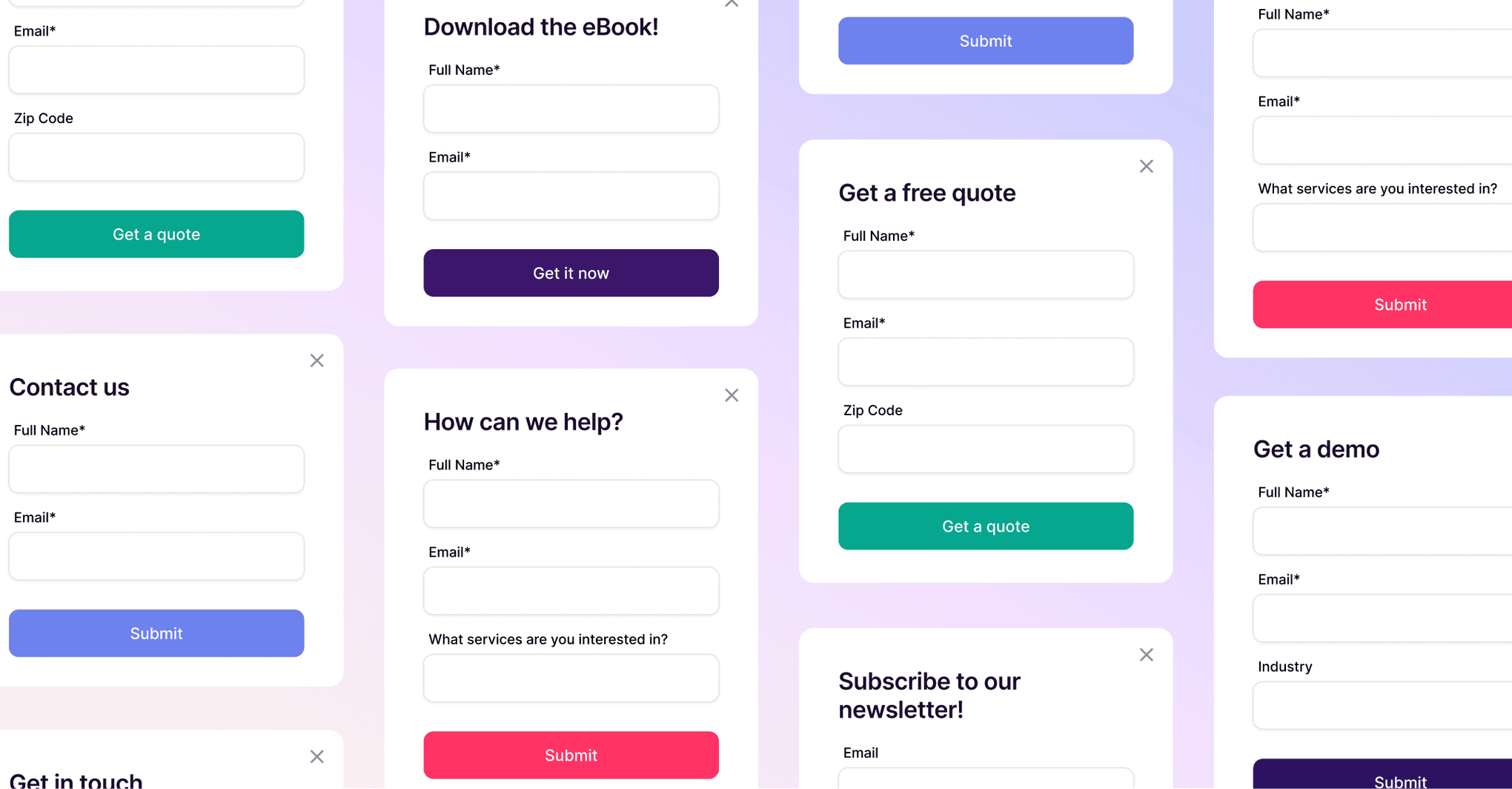Perri Gutteridge
VP of Customer Success
Customer service has always been one of those things that can make or break a business. A smooth experience can turn a first-time buyer into a lifelong fan, while a frustrating one can have someone hitting “unsubscribe” faster than you can say “support ticket.”
And now, in 2025, there’s a new player on the field reshaping how customer service gets done: artificial intelligence (AI).
You’ve probably seen it everywhere: chatbots answering FAQs, AI-driven knowledge bases pulling up the right resources instantly, even voice assistants taking on routine queries.
But with all the hype, there’s one thing worth remembering: AI is incredible at handling the basics, but it’s not the whole story.
(At Copper, we’re partial to our own AI chatbot, Penny, who we’ve trained on our Help Center to handle the routine stuff, so our team can stay focused on complex or strategic questions. Shoutout to Intercom for powering Penny!)
If you’re thinking of skipping the human element entirely, you’re setting yourself (and your customers) up for disappointment.
The rise of AI in customer service
These days, AI isn’t the futuristic “someday” tool it used to be. It’s here, it’s everywhere, and it’s quickly become the front door to most customer service experiences. Whether you’re trying to check your bank balance or track a package, odds are you’ll hit a chatbot or automated system before a human ever enters the chat.
So why is AI suddenly everyone’s favorite teammate? A few big shifts:
Customers expect instant answers. Nobody wants to wait on hold anymore. If it’s 3 p.m. or 3 a.m., people still want help now.
Support teams are drowning. More businesses run online and globally, which means the volume of questions has skyrocketed.
AI finally fits the budget. What used to be locked behind enterprise-level price tags is now available (and actually useful) for smaller businesses too.
Put simply: AI can take on the repetitive, high-volume stuff at a pace no human team could manage without burning out or breaking the budget.
Where AI really shines
Before we get into the “yeah, but…” part, let’s give AI credit. It’s seriously good at some things:
Answering FAQs on the spot. For example, things like what’s included in packages, how to get in touch with an account manager, or accepted payment methods, are the straightforward, repetitive questions AI can handle instantly.
Serving global customers. AI doesn’t keep office hours, which means a client in Australia can get quick answers without waiting six hours for your U.S. team to wake up. Bots bridge those time zone gaps so international customers feel supported in real time.
Playing traffic cop. AI can quickly route a question to the right team or hand it off to a human when things get complicated.
Serving up suggestions. Because it pulls from history and knowledge bases, it can often guess the answer faster than a person could dig it up.
Noticing customer vibes. Advanced tools can flag frustration in tone or wording and ping a human to jump in before things go south.
If you’re not letting AI cover at least these basics, you’re making life harder for both your team and your customers.
Where AI drops the ball
But here’s the thing — speed and efficiency only get you so far. At the heart of customer service is something AI just doesn’t have: empathy. Relationships aren’t built by algorithms.
Here’s where AI tends to stumble:
Complicated issues. AI can handle step-by-step questions, but when a problem has multiple layers or requires creative troubleshooting, bots usually hit a wall. These moments call for human judgment and experience.
Handling emotions. Customers who are angry, stressed, or disappointed need empathy. A scripted response may check the box, but it won’t calm someone down or rebuild confidence the way a real conversation can.
Adding personal touches. People don’t want to feel like ticket #8421. They want to be remembered, acknowledged, and treated like their situation matters. That kind of personalization requires a human touch.
Creating loyalty moments. The “wow” factor happens when someone goes out of their way to solve a problem, offer a thoughtful suggestion, or deliver a little extra. AI can’t improvise those gestures or create memorable experiences.
Strategic conversations. AI can’t step back and see the bigger picture. If a client is using a product in a clunky way when there’s a simpler option, or if they’d clearly benefit from upgrading to a higher plan, only a human can spot that. Upsells and expansions happen when someone connects the dots, understands the context, and makes a thoughtful recommendation.
That’s why AI shouldn’t be thought of as your entire customer service team. It’s the front line, the filter, the helper, but not the whole army.
How to combine AI and the human touch
AI is like that eager junior associate who works fast, never complains, and cranks through repetitive tasks without breaking a sweat. But just like you wouldn’t send them to close a six-figure client deal on their own, you shouldn’t expect AI to run your entire customer experience. The sweet spot is letting AI take the load off while your human team leans into the relationship-building work only people can do.
Here’s how that balance looks in practice.
1. Let AI handle the repetitive stuff
If your client success team spends hours fielding the same questions — “What’s included in your retainer?” “How quickly can you turn around a campaign?” “Where can I find last month’s report?” — you’re not making the most of their talent.
AI is a perfect fit for FAQs and quick-turn requests. A chatbot on your site or an AI-assisted knowledge base can handle the basics so your consultants and account managers can focus on strategy and problem-solving.
Tip: Review your last quarter’s support tickets or client emails. Spot the 15–20 most common questions and automate those first.
2. Always have a human “escape hatch”
Clients and customers will tolerate a bot for quick answers, but nothing frustrates them more than being trapped in an endless loop of canned responses.
Make sure there’s always a clear way to talk to a person. For example, if a media brand’s advertiser needs to renegotiate a campaign deadline, that conversation can’t stay in bot-land — it has to escalate to an account manager.
Tip: Build an obvious “Talk to your account manager” or “Connect with support” option. Some tools even allow sentiment detection, so if a client is clearly frustrated, they’ll be routed straight to a human.
3. Train your AI with context
AI isn’t plug-and-play. If your bot doesn’t know about your service tiers, your specific campaign workflows, or your reporting schedule, it’ll frustrate people instead of helping them.
Agencies and consultancies deal with nuanced client relationships, so your AI needs accurate, updated context to avoid missteps. Imagine an AI bot giving a client the wrong reporting cadence — that’s an awkward conversation no one wants to have.
Tip: Assign ownership for “AI upkeep.” Just as you’d update onboarding decks or case studies, keep your AI tools refreshed with new client FAQs, updated timelines, and the latest packages.
Get the latest from our blog every month
4. Invest in your CX team’s soft skills
If AI is answering the basics, your human team gets to shine in the moments that really matter — smoothing over a tough campaign delay, managing scope creep without burning bridges, or helping a consulting client see the bigger strategic picture.
These moments need empathy, negotiation, and creativity — the very things AI can’t deliver. Agencies, especially, live and die by relationships. If your people aren’t trained to handle difficult conversations with care, no amount of automation will save you.
Tip: Run quarterly role-play workshops. Have your account team practice situations like explaining overages, resetting client expectations, or handling last-minute media buy changes. It’s uncomfortable at first, but it makes real-life conversations far smoother.
5. Use AI as a coaching tool for your team
AI isn’t just customer-facing, it can also be a mirror for your team. By analyzing transcripts, emails, and support logs, AI can highlight recurring friction points. Maybe clients keep asking for status updates earlier than expected, or maybe your team’s phrasing around scope feels a little too harsh.
Here’s where it gets even more useful: some of those recurring questions may not make sense to add to your public help center, but you can absolutely feed them into your chatbot so it gets smarter over time. That way, clients still get quick answers and your team spends less time repeating themselves.
Instead of using these insights to micromanage, treat them as coaching material. The result is sharper client conversations and a chatbot that’s always learning right alongside your team.
Tip: Dedicate part of your weekly team meeting to AI-driven insights. Discuss trends like “clients keep asking for this earlier” or “we’re seeing confusion about X process.” Treat it as collective problem-solving, not individual blame.
Tangible strategies for making AI work in your CX
Let’s get even more concrete. If you’re considering AI (or want to improve how you’re using it), here are some practical steps to take:
Start small. Don’t roll out AI everywhere at once. Begin with one channel (say, live chat) and expand once it’s working smoothly.
Focus on the customer journey. Identify where speed matters most (like pre-purchase questions) and where human connection matters most (like resolving billing disputes).
Measure the right metrics. It’s not just about reducing response times. Look at customer satisfaction (CSAT) and net promoter scores (NPS) to ensure AI is actually improving experiences.
Communicate clearly. Let customers know when they’re interacting with AI vs. a human. Transparency builds trust.
Don’t neglect accessibility. Make sure your AI tools work for customers with disabilities (e.g., compatibility with screen readers).
What businesses risk if they go “AI-only”
It’s tempting to think you can cut costs by replacing humans with bots. But here’s the reality:
You’ll lose trust. Clients can usually tell when they’re talking to AI. For simple questions, that’s fine. But in more complex or sensitive situations, canned responses feel impersonal — and once that trust starts to slip, it’s tough to rebuild.
You’ll inch into relationship red flag territory. If you’re not properly keeping eyes on your customers, you may already be sliding toward warning signs of churn. Once a client starts wondering if they’re really being heard, the relationship is already on shaky ground.
You’ll miss opportunities. AI can answer the question in front of it, but it won’t catch the subtext. A client mentioning TikTok or struggling with reporting deadlines is an opening for a human to step in with ideas, upsells, or stronger support. A bot just moves on.
Your business’ reputation takes a hit. One awkward AI exchange is all it takes for a screenshot to circulate. Agencies and consultants depend on credibility, and bots can’t repair a misunderstanding with an apology or personal reassurance the way people can.
You save money but limit growth. AI lowers costs in the short term, but humans are the ones who build loyalty and expand relationships. Lean too heavily on bots, and you’re trading long-term momentum for short-term efficiency.
In other words: AI is a cost-saver, but humans are a revenue-driver. The best businesses make space for both.
The future of AI in customer service
AI will only get better with smarter conversations, sharper emotion detection, smoother integrations. But even then, the best brands will keep humans in the loop. Think of AI as the engine of service and people as the soul. Without both, the system falls flat.
Ultimately, AI in customer service isn’t about replacing people, it’s about empowering them. Businesses that get the balance right will see faster responses, happier customers, and less burned-out teams.
So if you haven’t yet, it’s time to start experimenting with AI in your customer service.
Automate the easy stuff, keep your humans focused on the hard stuff, and create an experience that feels both efficient and human. That’s the sweet spot.
And if you’re looking for a platform to help you actually manage those relationships once the conversation moves past the bot? That’s where Copper comes in. We’re built to help agencies, consultants, and media brands strengthen client relationships at scale. Try Copper for 14 days free and see how easy it can be to keep the “human” side of customer experience front and center.






